Is this the end of the fitted kitchen? 6 reasons why unfitted kitchens are on the rise
Fitted kitchens will always have a place, but unfitted kitchens are becoming increasingly popular, and here's why
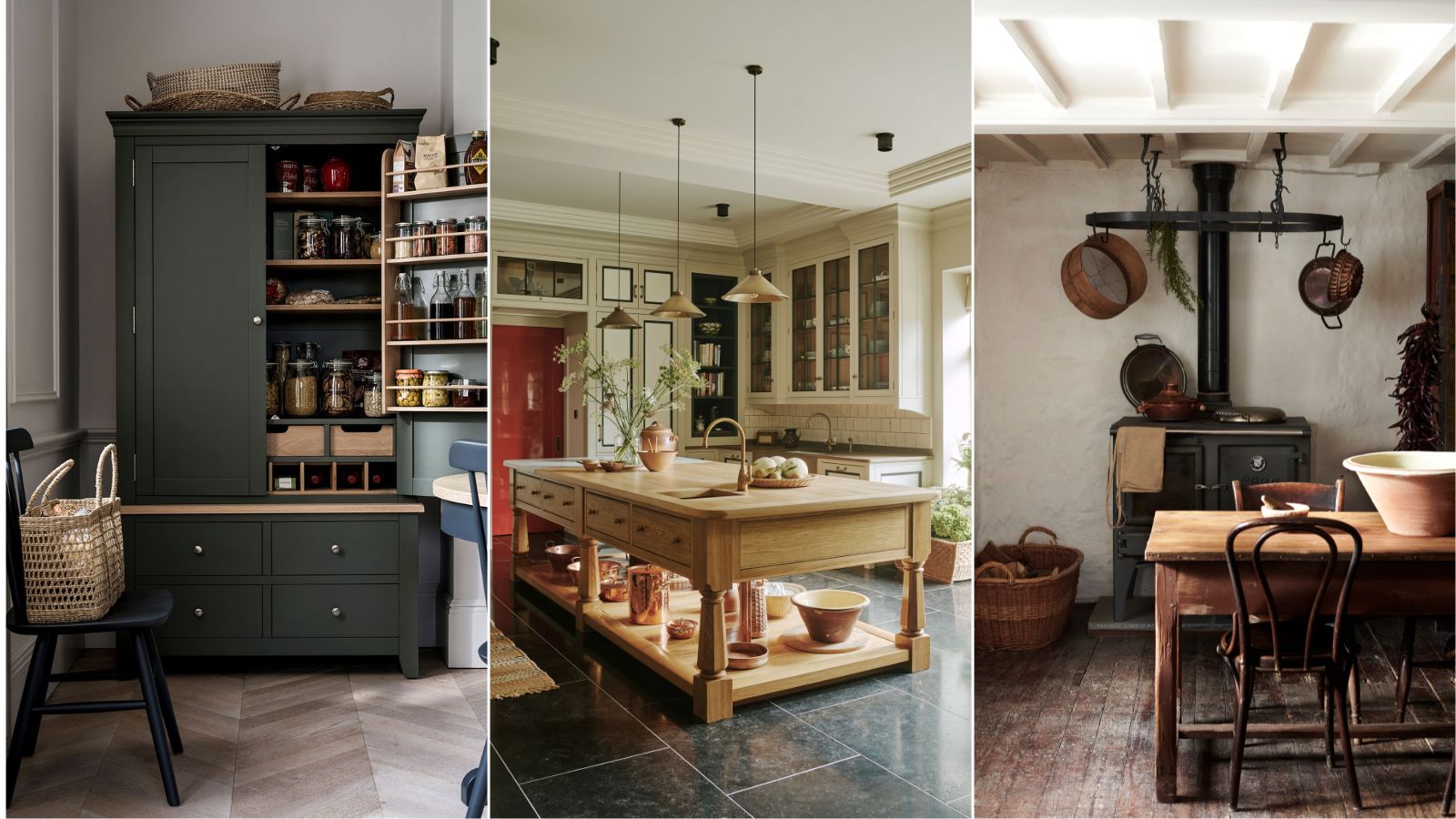

Today kitchens are more sophisticated than ever with smart appliances, sleek and seamless ‘invisible’ cabinetry and clever integrated storage solutions. Yet, despite all of the kitchen tech and innovation, on the flip side, there seems to be a trend for looking back rather than forward.
Yes, when it comes to kitchen design the unfitted kitchens composed of freestanding furniture such as the butcher's block, baker's table and freestanding larder cupboard are all making a comeback as we seek a more homely, lived-in aesthetic.
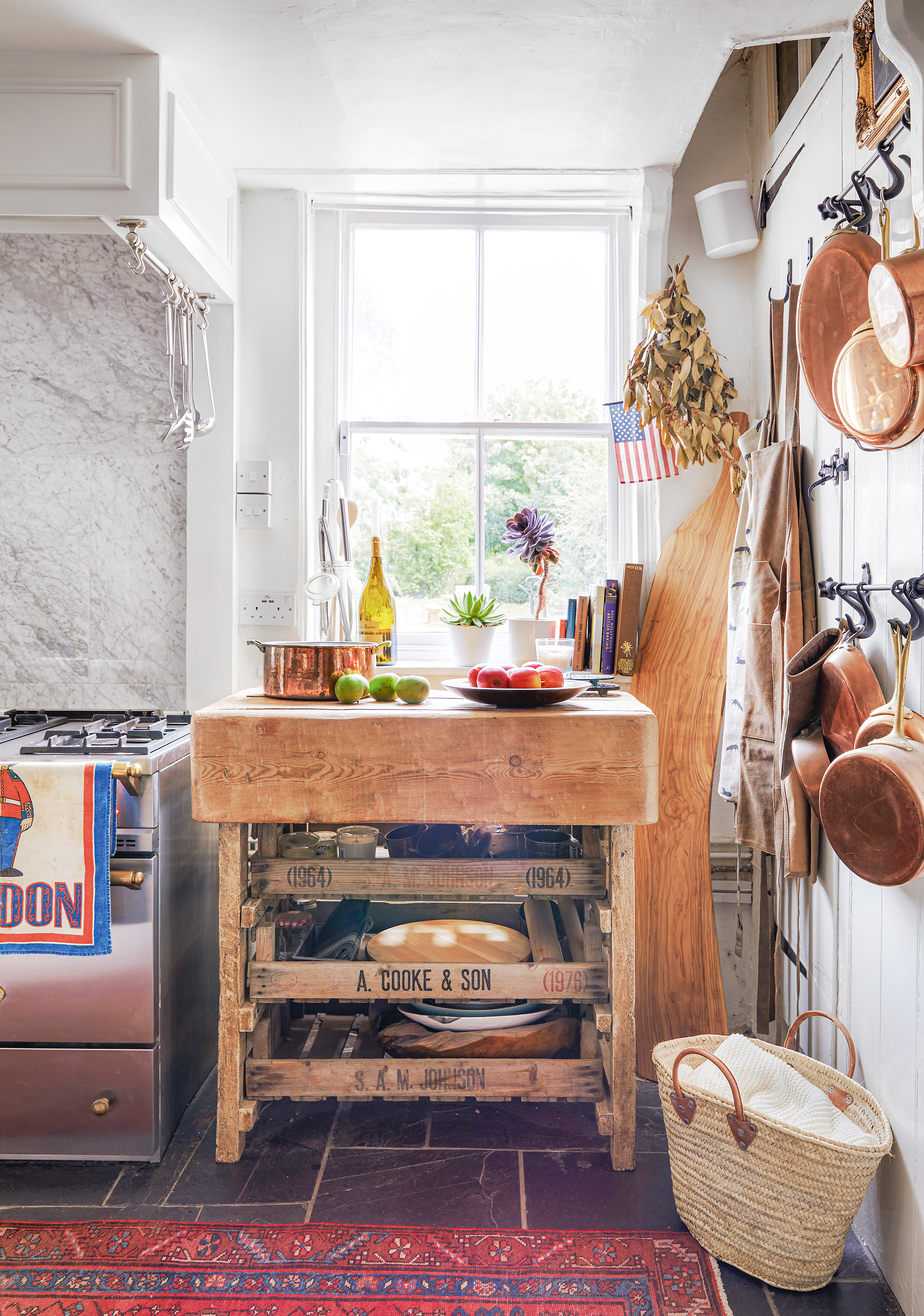
However, that’s not to say fitted cabinets are going anywhere, they’re here to stay, but homeowners are increasingly pairing runs of cabinets with additional kitchen storage and preparation solutions to get a space that features the best of both.
Of course, it’s not all about aesthetics, kitchen designs made up of individual pieces have a number of practical benefits including the ability to have a flexible layout and the option to bring pieces with you should you move, which is also a bonus from a sustainability perspective.
We reached out to the interior designers to get more insight into this growing kitchen trend and why they think unfitted kitchens are proving so popular.
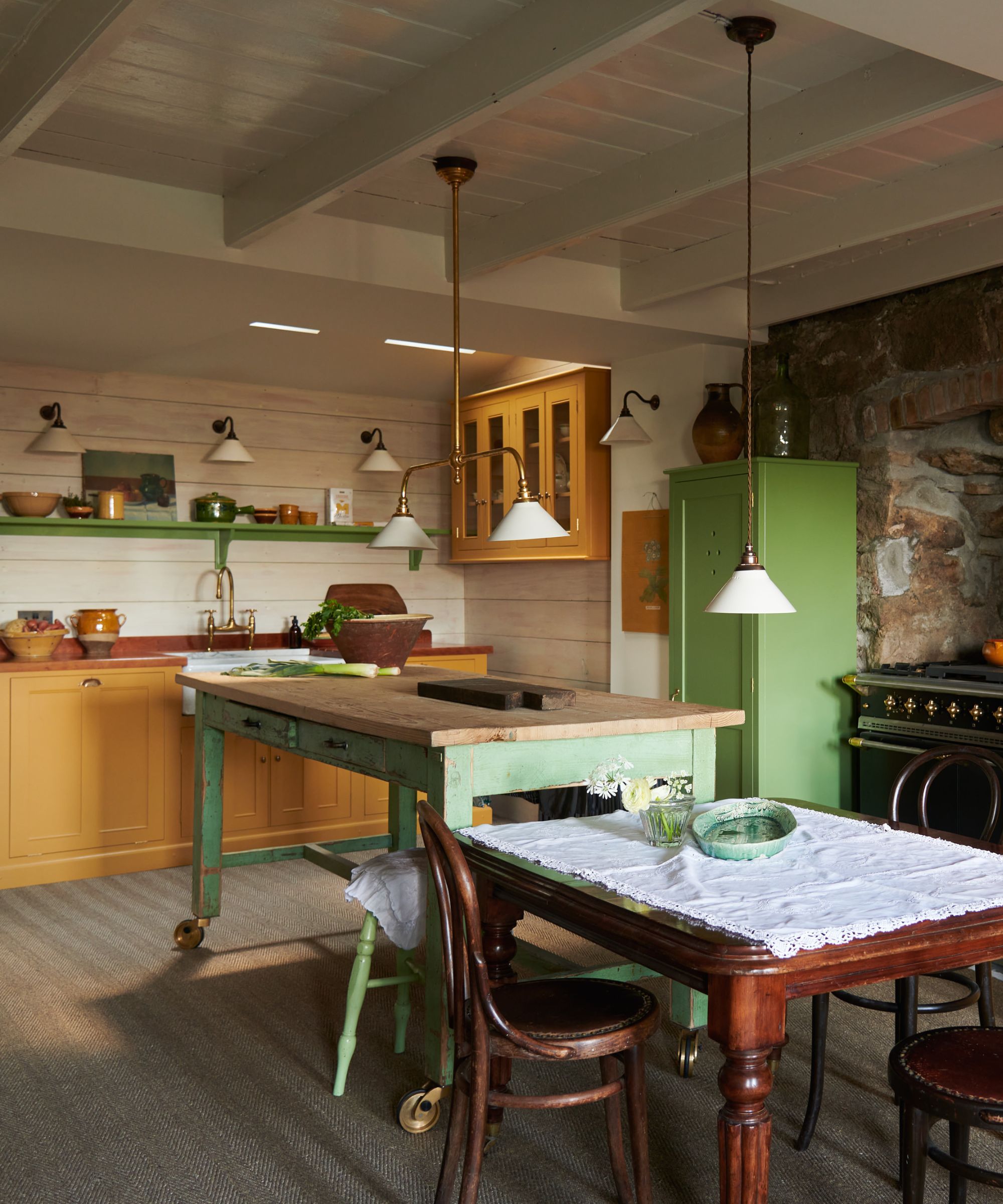
Why are unfitted kitchens on the rise?
An unfitted kitchen, also known as a freestanding kitchen, is a kitchen comprised of individual pieces of portable furniture rather than fitted kitchen cabinets which are fixed to the walls and specifically designed to fit the dimensions of a room. Once commonplace in the kitchens of the past up until the dawn of the fitted kitchen in the mid-20th century, the unfitted kitchen style is growing in favor with lovers of the modern rustic look.
Of course, having a completely unfitted kitchen is not practical, after all, you still need a fixed sink unit plumbed to the wall, but there appears to be a trend for keeping fitted cabinetry to a minimum and instead supplementing these with movable, freestanding kitchen storage, prep tables and appliances.
‘An unfitted kitchen is easy to live with, it comprises of well-made cupboards and not too many of them, this allows space in the kitchen and whether the room is small or large it creates a place to live rather than just a place to work, because it feels less structured and formal,' says Helen Parker, creative director at deVOL kitchens.
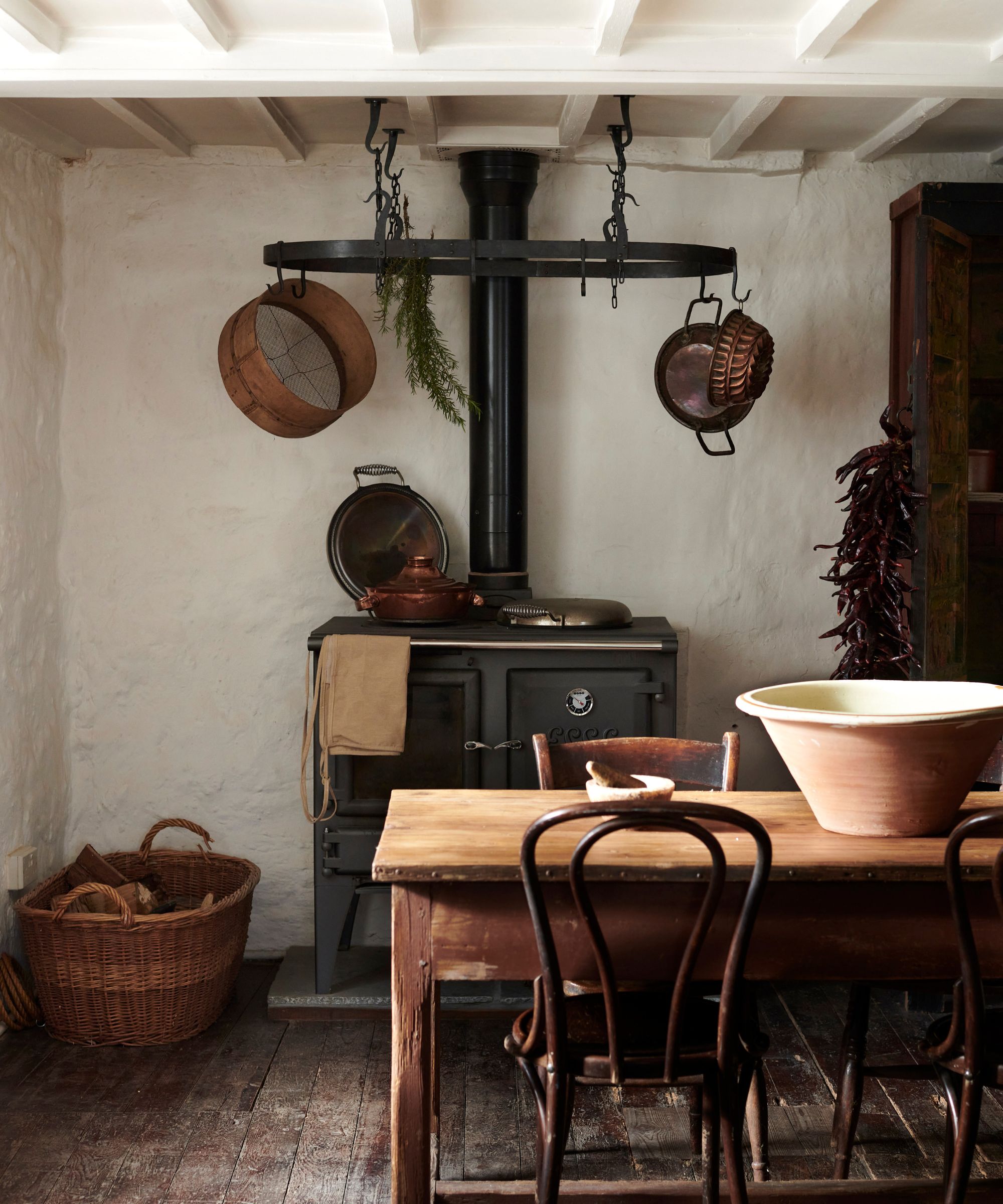
The key draw of the unfitted kitchen is its flexibility. Today kitchens serve so many purposes in addition to cooking such as socializing, work, hobbies, creative projects, workouts – the list goes on. Having pieces that are easy to move means that you can quickly reconfigure the space and layout to suit multiple functions. For example, a kitchen island set on casters can be quickly wheeled out of the way to make space for an extending dining table to accommodate large social gatherings.
'The fitted kitchen island has become a key consideration for many when designing a new kitchen, however, more often than not, it can quickly become a design flaw, being too large and cumbersome for the space and restricting flow around a busy room. Today, many are investing in freestanding pieces for the kitchen, providing flexibility in design as well as the added benefit of being able to take it with you if you move house,’ explains Lisa Coppin is Chief Creative Officer at The Cotswold Company.
Freestanding kitchens are also a great way to future-proof spaces. While fitted cabinetry can be designed around your needs, these needs inevitably change over time - the beauty of the freestanding kitchen is that it can change with you and can evolve.
So why are freestanding kitchens becoming more popular? We asked the interior designers for their insights and have compiled the key reasons interior designers and homeowners love this kitchen style.
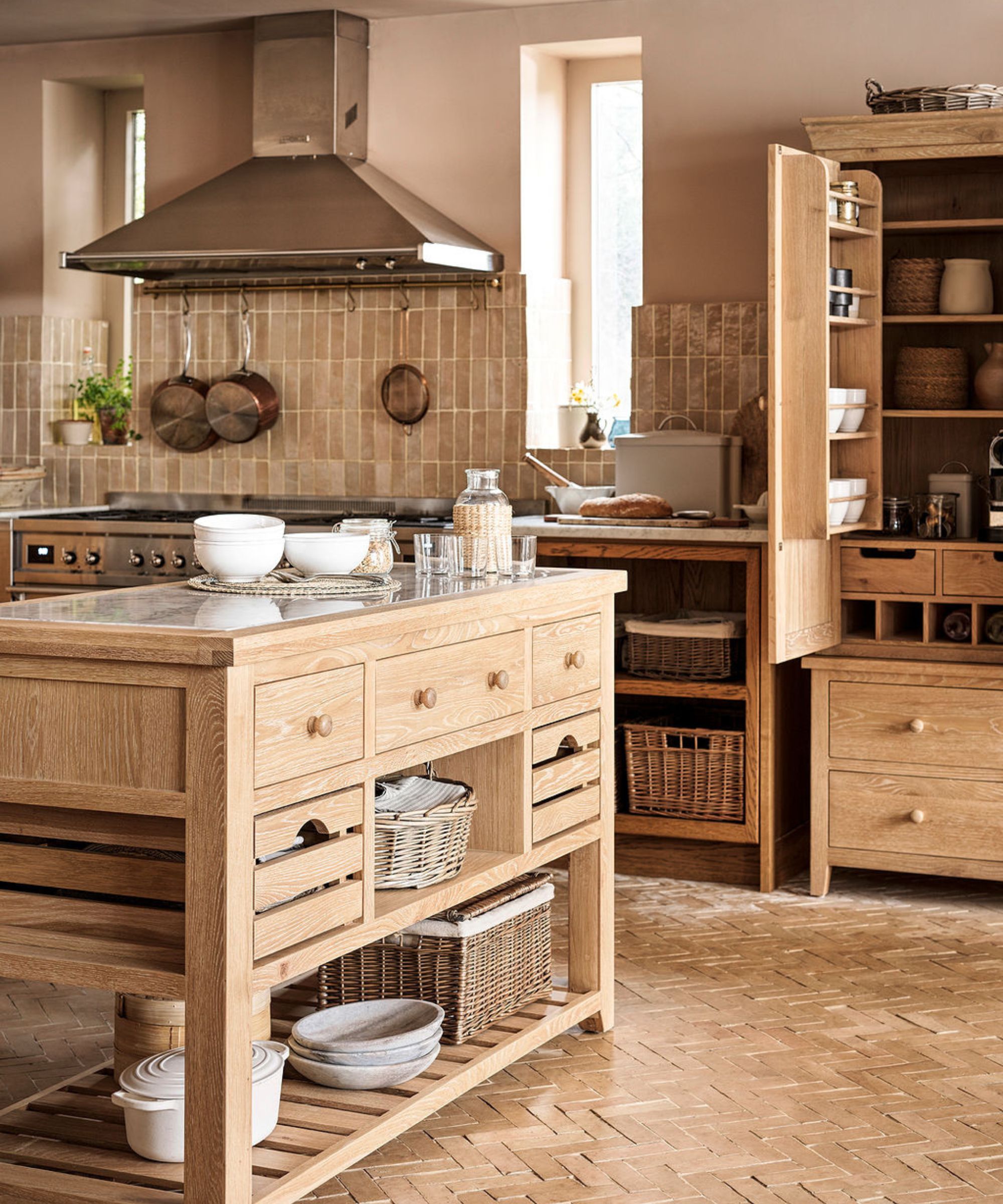
1. Create flexible layouts that flow with your home

With the trend for open-plan living spaces still going strong, many kitchens are today integrated into larger living spaces which in turn has an impact on their design. Open-plan kitchen layouts comprising unfitted units which can easily be moved help bring multi-functional use to these spaces, as they can be easily repositioned.
'It’s interesting how freestanding pieces that make up a kitchen feel so much more at home in their surroundings than a wall-to-wall fitted kitchen,' says Helen Parker, creative director at deVOL. 'The flow from one room to another in your home is made much easier with freestanding furniture, it is a softer, more sociable and comfortable way to use the space.'
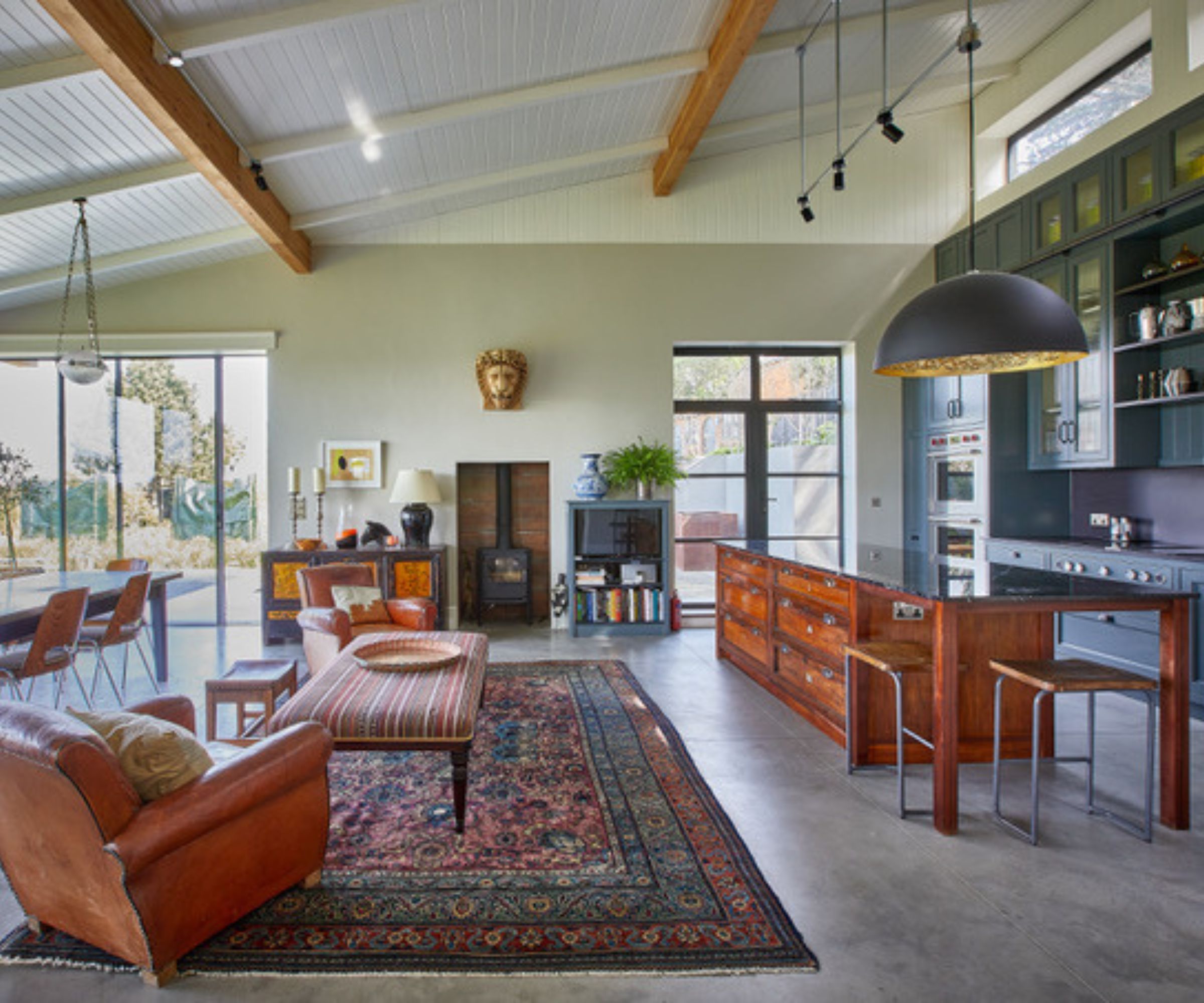
Visually, using freestanding and vintage pieces to furnish kitchens helps them integrate with open-plan living spaces. Kitchens by Holloways has seen increased demand for combining customized antique pieces alongside their fitted units to create a lived-in look.
'People are definitely thinking about kitchens as more ‘liveable’ spaces – whilst a few years ago this may have been reflected in open plan configurations, this is now being brought into layout and even furniture and material choices, making kitchens less clean-lined and more inviting and full of unique character,' says Robert Burnett, co-founder and director at Kitchens by Holloways.
'We are often asked about incorporating certain items of furniture into a scheme, whether it is a vintage heirloom that they wish to work with the scheme or something they’d like us to source, homeowners are often wanting something with a bit of history added'
2. Unfitted kitchens evolve with your needs

Unlike fully fitted kitchens which have a set layout and style, unfitted kitchens can be altered and added to over the years which is a real win in terms of future-proofing your space.
‘Once installed, fitted kitchens become a permanent fixture of the home, leaving little room for future modifications without significant expense or effort. This can be particularly limiting in today’s fast-paced world, where the ability to adapt and change is increasingly important,’ says Paul Staden, Founder and Designer, Pilgrim House.
'Unfitted is a thoughtful response to the evolving needs of modern living. Instead of replacing an entire kitchen when styles change, you can simply swap out. This not only reduces waste but also encourages a more sustainable approach to home design. The pieces changed can be sold or repurposed - considerably less impact than ripping out an entire kitchen, just to be dumped.’
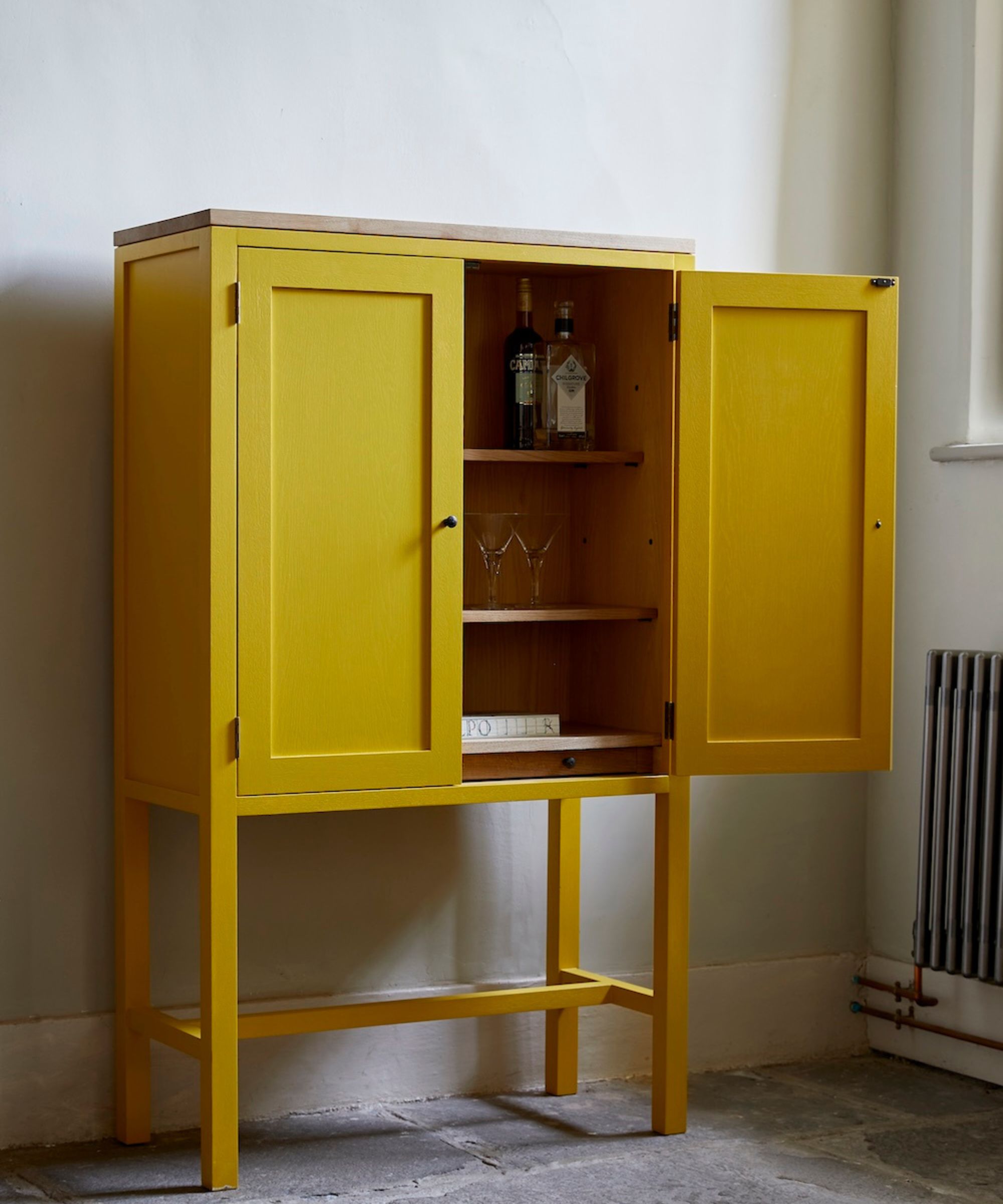
However, achieving this relaxed and versatile space still requires plenty of prior planning advises Paul Staden.
‘Careful thought needs to be given to the overall layout. It's essential to plan for a layout that accommodates this flexibility, ensure areas like the sink and cooker are logically placed and easily accessible, regardless of how you choose to arrange the other pieces.
The big things to watch out for are plumbing, electrics, and gas he says. 'In a fitted kitchen, these are often concealed behind units and within walls, but in an unfitted kitchen, you’ll need to think creatively about how to hide or integrate these services without compromising the look. For example, pipework may need to be channeled into walls or under floors, and power points should be positioned thoughtfully to avoid unsightly cables.'
3. You can tailor your storage solutions
Unfitted kitchens can be comprised of all sorts of components and the beauty is you can choose what suits you, from freestanding islands on casters for easy portability to large glazed dressers for displaying collectables and china and marble-topped tables for keen bakers. There’s a wealth of freestanding furniture in all manner of sizes allowing you to tailor your storage and preparation needs around your lifestyle and needs. One key piece which continues to grow in popularity is the pantry. There are many companies that offer new designs, alternatively, vintage cupboards are perfect for adding rustic charm.
'Vintage pantries are the easiest and most popular addition to a fitted kitchen, they add a little character and personality not to mention practicality,’ says Helen Parker. ‘You can buy a reasonably inexpensive pantry cupboard at a flea market or antique fair, play around, paint it, and add new hardware, you can add café curtains inside the doors if it is glazed and suddenly you have something special and unique to you.’
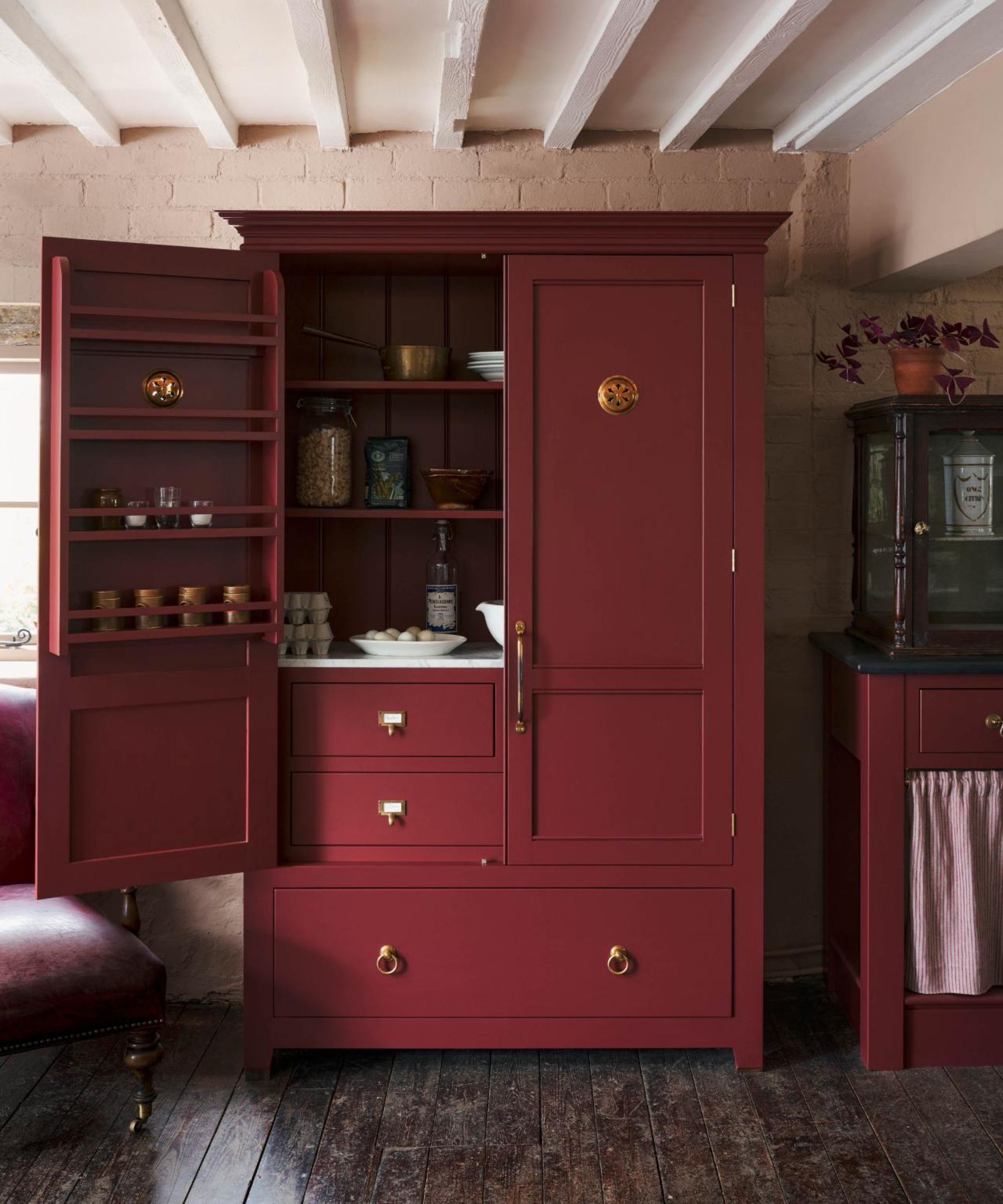
The movable island is also a staple of the unfitted kitchen. Not only do these provide extra prep and storage space they cleverly zone cooking and social spaces. There are a huge amount to choose from from vintage-style drapers' tables to industrial stainless-steel designs.
'You should opt for pieces that can be easily moved or repurposed as your needs change. A movable island, for example, can serve as additional prep space today and be relocated to create a dining area tomorrow,' says Paul Staden.
'Having everything matching in a room is not imaginative, but add a lovely scrubbed pine kitchen table and some pretty painted chairs and all of a sudden the kitchen feels homely and a place you want to stay,' adds Helen Parker, Creative Director of deVOL Kitchens. 'Smart old wall cupboards, open shelves and plate racks are other popular extras that work well integrated into an existing fitted kitchen.'
4. You can mix different styles
If you love the retro kitchen, quirky boho or modern rustic kitchen looks then the unfitted kitchen style is for you. While fitted kitchens require you to settle on a specific style, taking an unfitted approach allows you to mix and match furniture styles from across the eras to create a unique space that reflects your personality.
'You can add to freestanding kitchens, starting with a few pieces and adding as time goes by. When you find that certain special piece that may be vintage, perhaps an old, stripped pine plate rack, so hard to find but when you do it’s a joy,' says Helen Parker. 'You just can’t add to fitted kitchens in the same way, they get fitted and that’s it, but with freestanding, things evolve and change. You have options, you can switch things around, add things, swap things, paint things, and change the mood.'
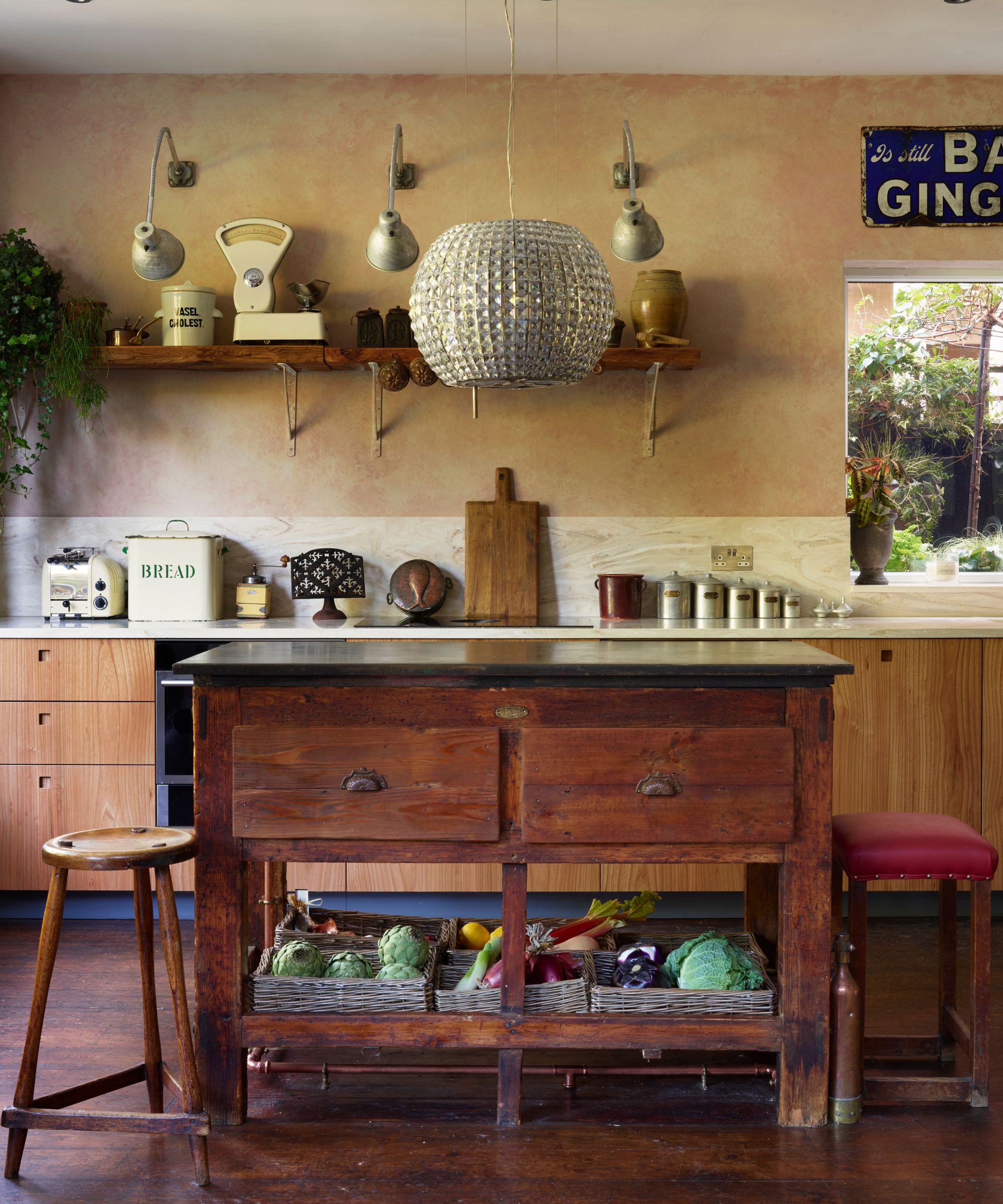
In this London kitchen, the owners chose to mix fitted cabinets with carefully curated antique pieces to create a fun mix of old and new.
‘This kitchen is the vision of a creative London couple who have spent years collecting antiques, curiosities and other furniture for their Edwardian family home. Pluck’s design includes an L-shaped layout that works with the shape and flow of the room, says Leila Touwen, co-founder of Pluck Kitchens. 'The cupboard doors are Elm and Brockwell Moss cabinetry, the different materials add to the sense this is not a traditional fitted kitchen, something that was important for our clients.'
Pluck’s pared-back cabinetry style is reminiscent of mid-century design, an era when utilitarian simplicity was celebrated – an inspiring ideology for us. In our homes now, we tend to mix different eras and styles, and that is the joy of this uncluttered design, it can be combined with personal flourishes, collections and more elaborate furniture and it works beautifully.'
This kitchen is about the layers of old and new, the combination of antique and modern, it feels like a room rich with stories and history, but it is not stuck in the past.'
5. Unfitted kitchens can feel more open and spacious

Opting for freestanding storage units and kitchen islands with open shelves can help spaces feel more open rather than having boxy fitted cabinets. We’ve noticed that open work tables are increasingly popular alternatives to the robust, fitted kitchen island as they help zone spaces while keeping them feeling visually unified.
These are particularly for small kitchens as demonstrated in this space designed by Christian Bense. In addition to islands, opting for storage units that sit on legs can also enhance the feeling of space within a room as they keep floor space open.

We’re also seeing many interior designers and kitchen companies choosing bespoke or vintage worktables designed to capture the aesthetic of the ‘under-the-stairs’ working kitchens of the Georgian and Victorian eras.
Taking inspiration from Victorian designs and blending heritage styling with up-to-date functionality, the Cook's table from Artichoke can be cleverly designed to incorporate plumbed sinks and electrics, with wiring and pipes all hidden in the structure. Of course, this means they aren’t strictly freestanding, but visually they bring the sought-after unfitted feel.
‘The cook’s table was a classic element of a Victorian kitchen and in recent years we have seen a revival of its popularity in the modern home. It sits beautifully in period houses allowing light and space to flow through the room, whilst also functioning as a modern multi-purpose prep area and social hub,' says Neil fox, director at Artichoke.
6. You can incorporate antique pieces
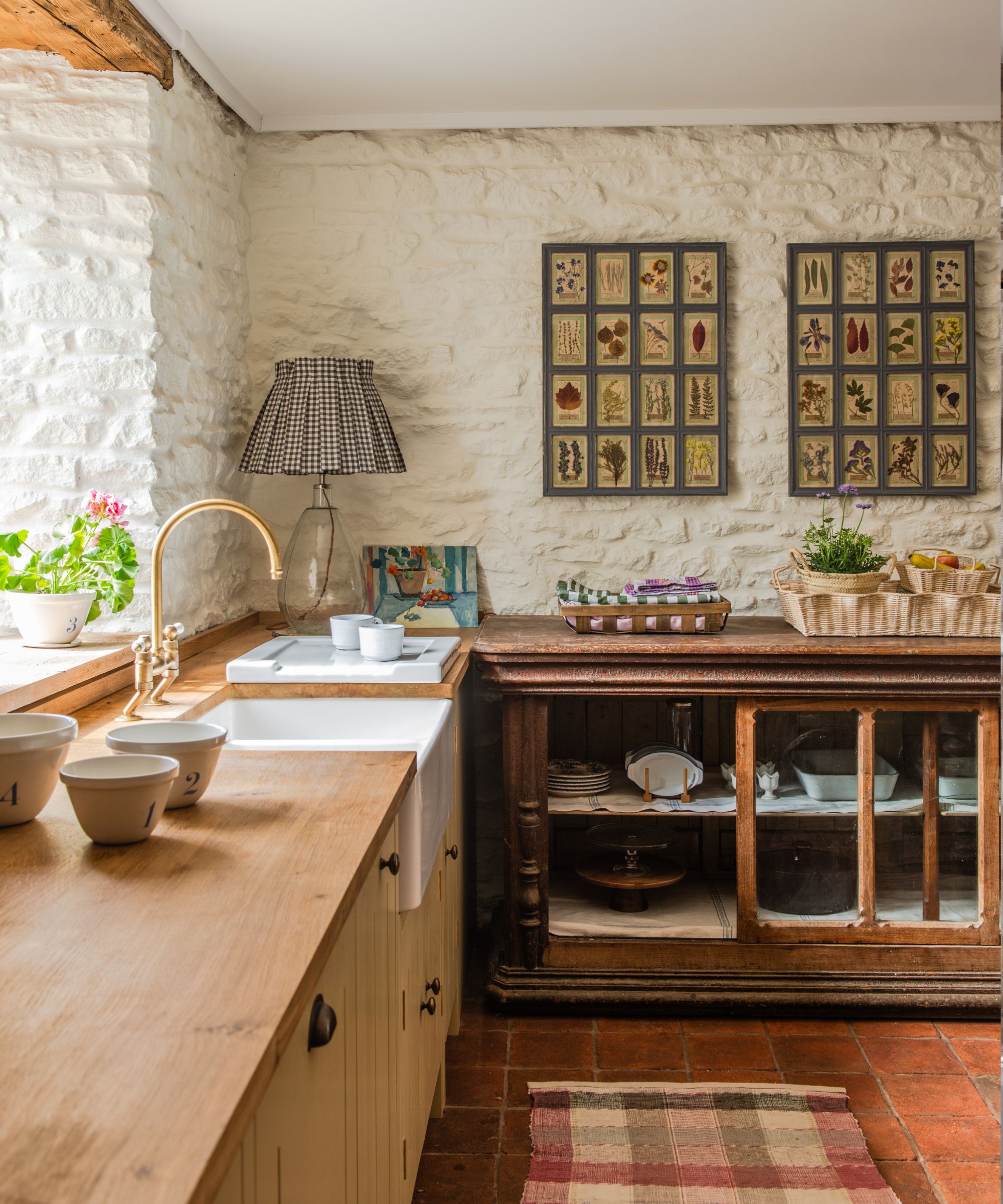
For those who love to decorate with antiques the unfitted kitchen is the way to go. Antiques can often have superior quality to modern pieces and feature beautiful patinas and textures from years of wear and use, adding unrivalled character to your space. Taking this approach allows you to furnish with antique pieces to create a really unique. It’s also a good approach if you live in a country cottage or a rustic barn conversion or farmhouse as the aged pieces will really complement the exposed materials and character of the architecture.
In her country kitchen Lisa Mehydene, founder of home brand Edit58 chose to combine a run of traditional shaker-style cabinets from British Standard by Plain English with an array of antique storage which each has a story to tell.
‘Whilst the cabinetry was new, we didn’t want the kitchen to feel as though it had just been installed, as it wouldn’t feel right in our old Barn. We, therefore, added a vintage shop counter from Belgium which we use to store all our serveware/platters/table linens etc,' says Lisa Mehydene. 'A vintage Indian wall cabinet from our Local farm shop houses glassware, a long vintage florists table that sits centrally in the space is used for everything from dining to Lego building and around that sits a set of original 1930’s Thonet Bentwood chairs sourced via a dealer from an abandoned cinema in the Chez Republic.’
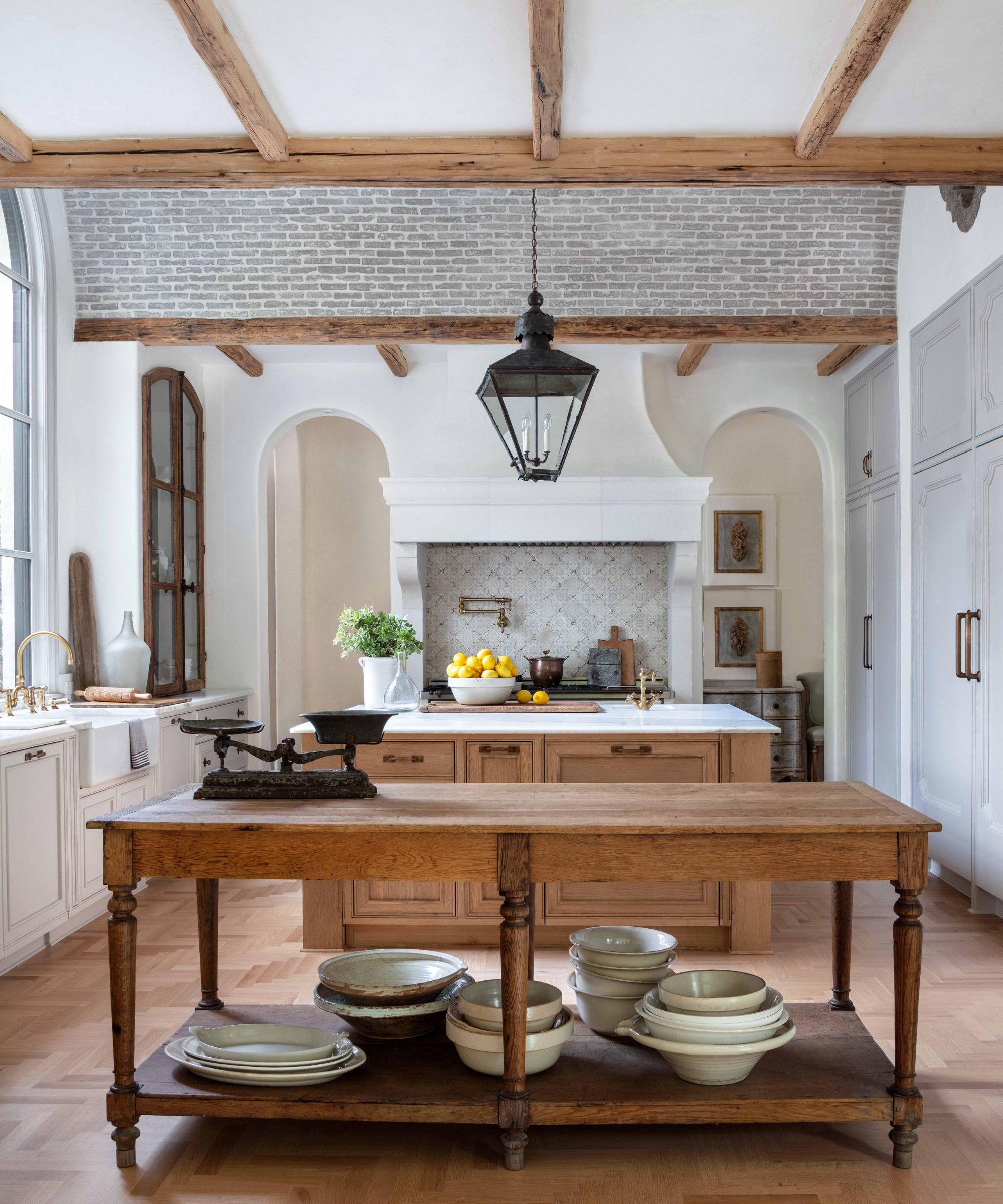
Interior designer Kristin Mullen is a master at sourcing and furnishing with antiques and often uses these in her kitchen projects. 'I have always loved a draper's table to add textural contrast and functional charm. In fact, these same clients had a draper's table in the previous kitchen we designed for them. We sourced this antique one for the project and love that it imparts a touch of rusticity to the space, tying in with the wood beams and antique built-in cabinets,' says Kristin Mullen.
There are many pros to an unfitted kitchen, and although this relaxed, laid back layout is a trend right now, it's also a timeless look that's been around for centuries. The best approach seems to be a mix between fitted and unfitted pieces so you get a balance between flexibility and practicality.
Sign up to the Homes & Gardens newsletter
Design expertise in your inbox – from inspiring decorating ideas and beautiful celebrity homes to practical gardening advice and shopping round-ups.

Pippa is a contributor to Homes & Gardens. A graduate of Art History and formerly Style Editor at Period Living, she is passionate about architecture, creating decorating content, interior styling and writing about craft and historic homes. She enjoys searching out beautiful images and the latest trends to share with the Homes & Gardens audience. A keen gardener, when she’s not writing, you’ll find her growing flowers on her yard for styling projects.
-
 I was looking for a way to bring the quiet luxury aesthetic into 2026 – Stephen and Ayesha Curry's kitchen backsplash is the solution
I was looking for a way to bring the quiet luxury aesthetic into 2026 – Stephen and Ayesha Curry's kitchen backsplash is the solutionQuiet luxury shows no signs of wavering, but how will it evolve? The basketball player's backsplash is the perfect way to introduce it to your kitchen
-
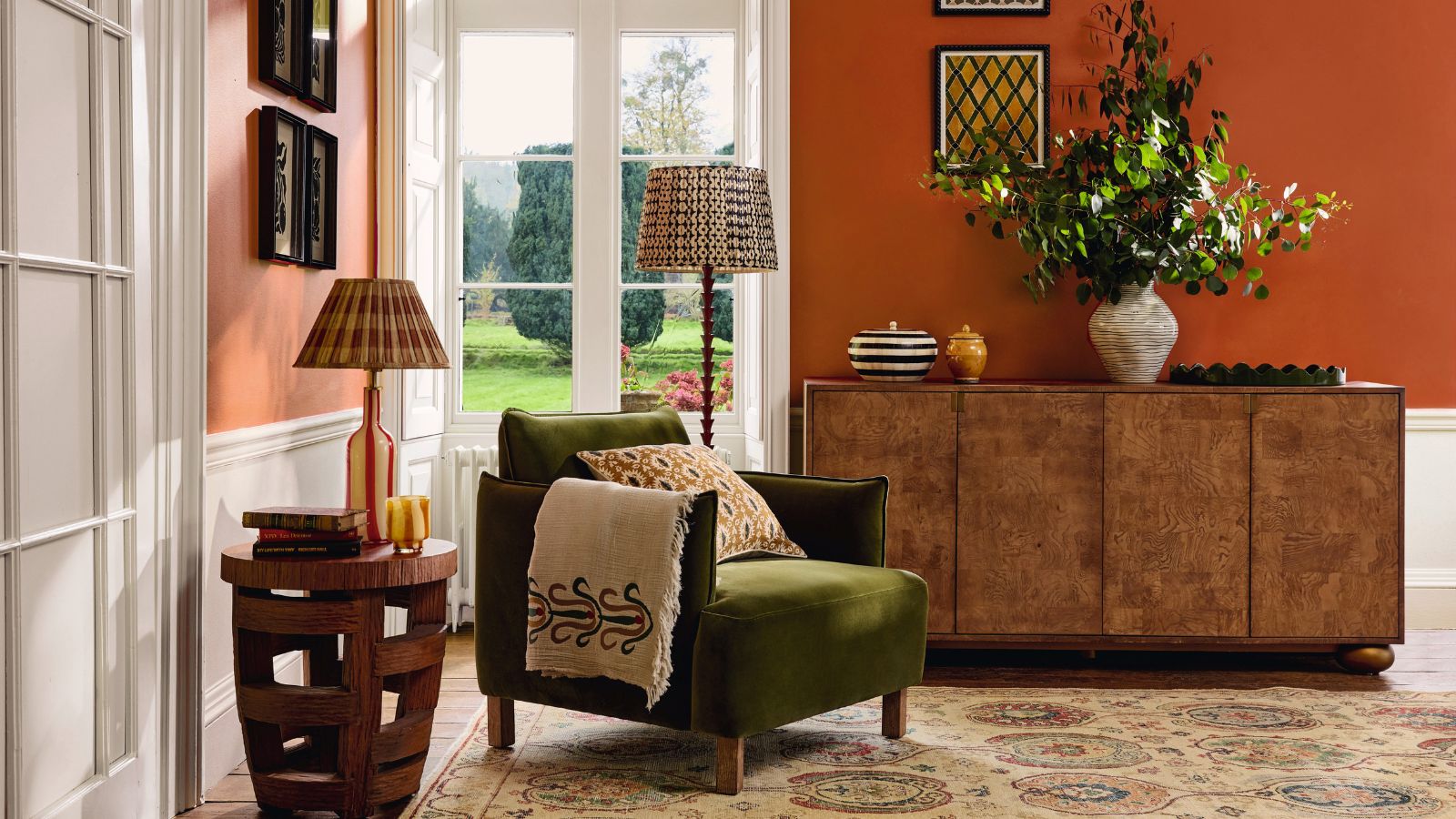 5 seasonal items you should always clean before storing – cleaning experts reveal it's crucial for preventing mold, musty odors, and pests
5 seasonal items you should always clean before storing – cleaning experts reveal it's crucial for preventing mold, musty odors, and pestsIt’s a must to keep them safe, experts warn